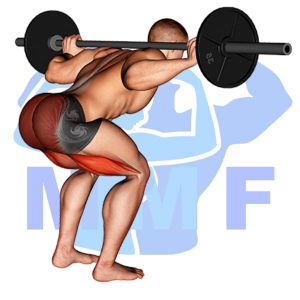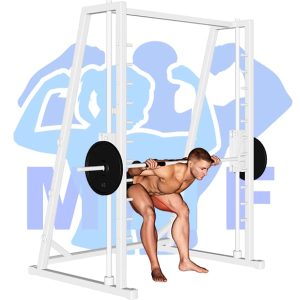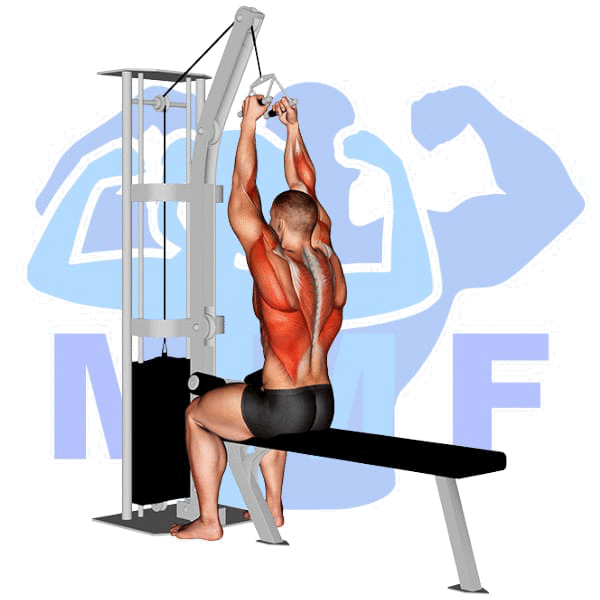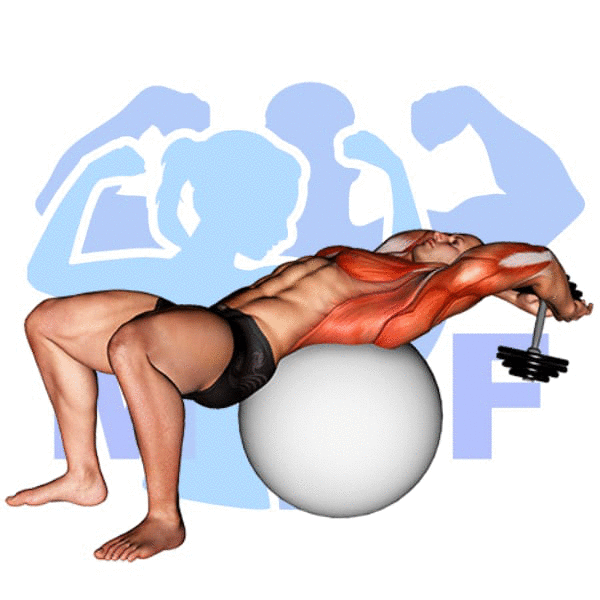Are you experiencing lower back pain after performing certain exercises or daily activities? It’s possible that you may be suffering from a condition known as hyperextension. This is commonly caused by repetitive bending or arching of the lower back, which puts pressure on the spine and surrounding muscles. But don’t worry, you’re not alone! Many people experience this issue and there are solutions available to relieve and prevent hyperextension. In this post, we’ll discuss effective strategies to overcome hyperextension and get you back to feeling your best!
Hyperextension Summary
- Primary Muscles: Erector Spinae
- Secondary Muscles: Gluteus Maximus, and Hamstrings
- Equipment: Hyperextension Bench
- Mechanics Type: Compound
- Force: Pull
- Utility: Basic or Auxiliary

Hyperextension Instructions
- Start by setting up in the hyperextension machine with a hip pad on your hips and ankles firmly in the ankle supports.
- Start each rep with your torso in the lower position.
- Lift your upper body up by pulling with your glutes and lower back.
- Pause at the top, then slowly lower yourself back down.
- Repeat your Hyperextension for 6-10 reps.
Video Tutorial
Hyperextension Muscles
Target (Agonist)
Synergists
Dynamic Stabilizers
- None
Stabilizers
Antagonist Stabilizers

Benefits of Hyperextension
Hyperextensions are an excellent exercise for strengthening the Erector Spinae, the muscles that run along the spine from the neck to the lower back. This exercise is particularly beneficial for improving core strength and stability, and can help reduce lower back pain. Hyperextensions can also help improve posture, balance, and flexibility. When performing this exercise, it is important to use proper form and technique, as improper form can cause injury. Additionally, it is important to work up to higher repetitions gradually, as this will help ensure that the muscles are being worked properly.
Tips for Performing Hyperextension
You’ve come to the right place if you’re motivated to enhance your hyperextension execution. These tips will get you the most out of this effective workout, while helping you receive all the benefits it has to give. You’ll have the ability to strengthen your core and back muscles, and minimize your chance of injury. So let’s get begin and see what these tips can accomplish for you.
- Master the form: Make sure to keep your back straight and your feet flat on the ground throughout the entire exercise. This will ensure proper form and help to prevent any injuries that can occur from incorrect form.
- Go slow and steady: Take your time during the exercise. Move slowly and with control, as this will help to maximize the benefits of the exercise.
- Use your core: Engage your core muscles throughout the exercise to make sure you’re getting the most out of it. Doing so will help you get stronger and improve your overall fitness level.
Benefits and Tips Video
Frequent Mistakes To Avoid
When conducting hyperextension, avoiding typical mistakes is key to getting the most out of the exercise and preventing injury. From bad form to not keeping your core engaged, these mistakes can reduce the productiveness of the exercise and can even raise your risk for injury. But relax, it’s not as challenging as it might seem. By knowing the mistakes to avert and taking the right actions, you can execute the exercise safely and effectively. So it is time for you to maximize your results from this exercise and enjoy the benefits of a productive workout.
- Not setting up the exercise correctly- Not setting up the exercise correctly can result in the person not getting the full benefit of the exercise and could lead to an injury.
- Rushing through the exercise- Rushing through the exercise will prevent the person from getting the full benefit of the exercise and also increases their risk of injury.
Find More Bodyweight Exercises Here
Variations and Complementary Exercises
If you are looking for other exercises that can help strengthen the same muscles as a Hyperextension, there are several variations, complementary, and alternative exercises that you can try. Below is a list of exercises that you can use to target similar muscles as a Hyperextension.
45 Degree Hyperextensions

The 45 Degree Hyperextension is an effective alternative or complementary exercise for the traditional hyperextension. This exercise focuses on the lower back muscles, helping to strengthen and build them. The 45 Degree Hyperextension can be performed on a bench that is angled at 45 degrees, allowing for a greater range of motion and making it easier to target the lower back muscles. The exercise can also be done using your own body weight, making it more accessible than the traditional hyperextension. This exercise can be adapted to suit different levels of fitness, making it an ideal choice for those looking for an effective alternative or complementary exercise for the hyperextension.
Bench Hyperextension

The bench hyperextension is a great complementary or alternative exercise to the traditional hyperextension. It is an excellent exercise for strengthening the lower back, glutes, and hamstrings. This exercise can be done with either bodyweight or with added weight for increased intensity. To perform the exercise, you lie face down on a bench and slowly raise your legs and torso off the bench. You can also perform the exercise with a cable machine or free weights. This exercise allows you to control the range of motion, allowing for a more isolated and focused contraction of the muscles being worked. The bench hyperextension is an excellent way to strengthen the lower back, glutes, and hamstrings without putting too much strain on the spine.
Plate Hyperextension

Plate Hyperextension is a great complementary or alternative exercise to traditional Hyperextension. It is a great way to add an extra challenge to your core workout. Plate Hyperextension involves holding a weight plate with both hands, extending your arms out to the side, and then bending at the waist and hinging at the hips until your torso is parallel to the ground. The added weight from the plate makes the exercise more challenging and helps to build strength in the lower back and abdominals. Plate Hyperextension also engages more of the stabilizing muscles in the torso and can help improve balance and posture.
Check Out These Top Bodyweight Exercises
Barbell Good Morning

The Barbell Good Morning is an excellent alternative or complementary exercise to the Hyperextension. It works the lower back and glutes similarly to the Hyperextension, but with the added benefit of using a barbell to add resistance. The Barbell Good Morning also helps to improve posture, as it requires you to keep your back straight and your shoulders pulled back while performing the exercise. Additionally, the exercise engages the core muscles and helps to improve overall balance and stability.
Good Mornings With Bands

Good Mornings with Bands is a great complement or alternative to the exercise Hyperextension. It is a dynamic, compound movement which targets the lower back and glutes, while also recruiting the hamstrings and core muscles. The bands provide resistance to increase the intensity of the exercise and make it more effective. The movement also requires balance and stability, making it a great core workout. Good Mornings with Bands can be done with a variety of band resistances depending on your fitness level and goals. As an added bonus, this exercise can be done anywhere without any special equipment – all you need is a band!
Smith Machine Good Morning Off Pins

The Smith Machine Good Morning Off Pins is a great complementary exercise to the Hyperextension. It works the same muscles, but with the added benefit of increased stability and safety. The Smith Machine allows you to adjust the height of the pins to fit your body, allowing for a greater range of motion and a more effective exercise. Additionally, this exercise provides core stability and balance, which helps to improve overall posture. This exercise is a great alternative to the Hyperextension, as it can be done with less risk of injury while still providing a great workout.
Find More Lower-Back Exercises Here
Opposing Complementary Exercises
To complement the exercise Hyperextension, it is important to perform exercises that work the opposing muscle groups. These exercises help to create balance in the body and build strength in the surrounding muscles. To maximize the benefits, try the following exercises:
Leg Raise

Leg Raises are an excellent complementary exercise to Hyperextensions. They work the opposing muscle groups in the lower back, namely the rectus abdominis and hip flexors. This helps to create a balanced strength development in the lower back, which can aid in injury prevention. Additionally, Leg Raises can help improve core stability and posture, which is beneficial when performing Hyperextensions. Additionally, Leg Raises work the upper abdominals, which can help to better stabilize the spine during Hyperextensions. With a combination of both exercises, you can build a stronger and more balanced lower back.
Leg Lift Knee Raise

Leg Lift Knee Raise is a great complementary exercise to Hyperextension, as it works the opposing muscle group. This exercise involves lying on your back and lifting your legs together up towards the ceiling, while keeping your knees bent. You should focus on using your abdominal muscles to lift your legs up as high as possible and then lower them back down. This exercise will help to strengthen your core and hip flexor muscles, while also working the hamstrings and glutes, which are the opposing muscle groups to those used in a Hyperextension.
Knee Hug Crunch

The Knee Hug Crunch is an excellent complement to the Hyperextension exercise. It works the opposing muscle group in order to strengthen and balance the back, hips, and abdominal muscles. The exercise involves lying on your back with your knees bent and your arms crossed over your chest. You then lift your head and shoulders off the ground and hug your knees into your chest. This helps to engage the deep abdominal muscles, which in turn helps to stabilize the spine and prevent injury. The Knee Hug Crunch also strengthens the hip flexors, which are often neglected during the Hyperextension. This helps to create a balanced workout and ensure that all of the muscles in the core are working together.
Get Informed And Stay Safe With Hyperextensions
Before starting any exercise routine, it’s important to understand the proper form and technique to avoid injury. This is especially true for hyperextensions, which can put a lot of strain on your lower back if not done correctly. It’s recommended to start with an empty bar or light weight and gradually increase as you gain strength and confidence. Always engage your core muscles and keep your back straight during the exercise to prevent excessive arching. If at any point you feel discomfort or pain, stop immediately and seek guidance from a professional trainer or medical expert. Knowledge and caution are key to getting the most out of your workout and staying safe.
References: Wikipedia | ExRx.net | PubMed.gov | Comprehensive List of Lower-Back Bodyweight Exercises




